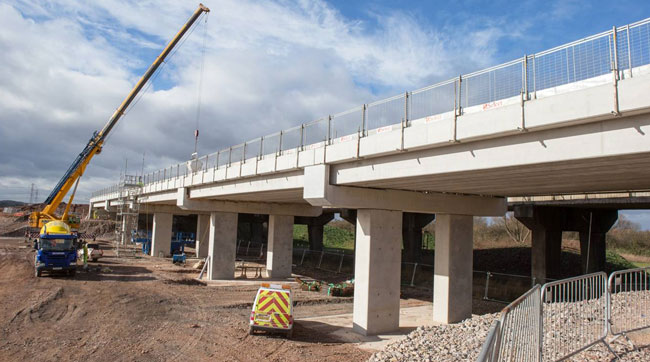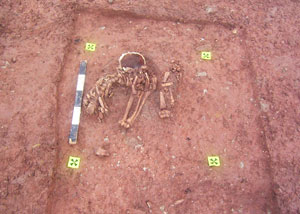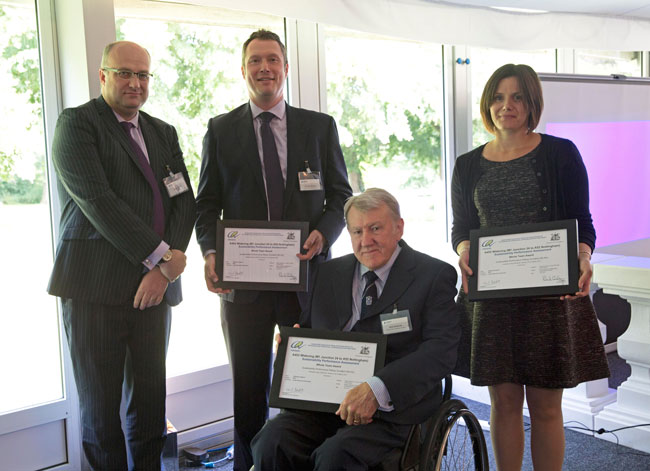A453 Widening (M1 Jct 24 to A52 Nottingham)Whole Project Award |
|
Project Team
Client: Highways England
Designer: White Young Green
Contractor: Laing O'Rourke Construction
-------------------------------------------------------------------------------------------------------------------------------------------------------------------------------------
Project summary
 |
The A453 is one of three major routes that connect the M1 Motorway to the City of Nottingham. It provides the principal route between Nottingham and the South, South-West of the country and East Midlands Airport. Rural Section The 9km long section between M1 Junction 24 and a roundabout junction at Mill Hill, southwest of Clifton, has been improved from a single two lane (S2) carriageway with some at grade junctions to a dual two lane all purpose (D2AP) standard with two grade separated junctions. The alignment of the new dual carriageway follows the alignment of the existing road from the M1 to Thrumpton, and the widening achieved by the construction of a westbound (W/B) carriageway on the south side of and adjacent to the existing road. The eastern section of the D2AP comes off line to the south of the previous carriageway from Thrumpton to the new Mill Hill Roundabout. The previous A453 carriageway over this latter stretch has been retained as a collector / distributor road for local traffic and to provide non-motorised user facilities. Barton Lane, the existing link from the A453 to Clifton Lane at Barton Lodge, no longer connects to the A453 directly. The rural section is unlit except for the slip roads at the grade separated junctions. It is subject to a 70mph speed limit. The central reserve of the D2AP has been hardened, with a concrete road restraint system over much of its length. |
Urban Section
The 2.5km long section through Clifton from Mill Hill Roundabout to the Farnborough Road / Fabis Drive junction has been widened from a single two-lane (S2) carriageway to a single urban standard 4-lane (S4) carriageway with at-grade junctions. The alignment of the new carriageway follows the alignment of the existing road for most of its length, and the widening achieved by the construction of new carriageway on the north or south side of the existing road.
The improvement includes signalising the existing Crusader Roundabout and upgrading the junctions at Green Lane and Farnborough Road to signalised circulatorys. Minor junctions connecting into the A453 have been made left-in and left-out only with the exception of the Nottingham Trent University North Gate which is signalised to allow all movements except for the right turn out. The urban section will continue to be lit throughout, with a 40mph speed limit.
Pinch Point Scheme
The A453 Pinch Point Scheme was a variation to the A453 Widening Scheme and has been constructed in parallel to the Urban and Rural sections. The works involved the installation of a MOVA controlled signal arrangement, associated cable ducting, carriageway widening, drainage, surfacing and lining upgrades. The scheme will considerably reduce the congestion currently experience at M1 J24 by diverting the A50(T) SB traffic onto the A453(T) SB towards M1 J23a.
Challenges faced and Achievements
Physical Resources Use & Management
The earthworks balance along the scheme was revisited several times to alter design where possible to negate the need for importation/exportation of material. This reduced construction traffic on the road and surrounding area and carbon impacts.
Energy and waste saving opportunities were trialled on the A453 one of which included the use of Concrete Socks to eliminate concrete washout within the urban areas as space for on-site concrete washout systems was not available. This eliminated the risk to the environment from concrete wash water and minimised waste.
Design for Manufacturing Assembly (DfMA) was utilised on structures along the scheme allowing for greater and more efficient on-site construction therefore reducing wastage and risk to the environment. This was particularly beneficial when working on structures over the canal and the River Soar.

The Historic Environment
| An advanced archaeological works package was developed to ensure that risk from known and unknown archaeology was reduced and any further investigative works could be undertaken without affecting the construction works programme. It provided an excellent opportunity for archaeological investigation works which uncovered a Romano-British farmstead enclosure, a crouched burial of an adult male, greyware pots potentially associated with a burial, and a young adult female to name just a few. These artefacts have been archived at the Museum of Nottingham Life. |  credit: Wessex Archaeology credit: Wessex Archaeology |
People & Communities
Extensive liaison with local authorities, key stakeholders and the local community was undertaken throughout the entirety of the design and construction process. Environmental liaison meetings were held with key stakeholders to provide opportunities to provide information on project updates and for feedback to be given.
The community liaison team established well attended community sessions within the Clifton area in the form of drop-in sessions during the daytime and evening sessions to allow for all to attend. The local community were kept informed of the numerous diversions of footpaths and traffic management via letter drops to ensure they were fully informed at all times.
A sensory garden was designed and built by the workforce for a local special needs school with many of our suppliers donating materials.
The Water Environment
The A453 was built within a floodplain. Various discussions were held with the Environment Agency resulting in two flood compensation areas being created along the scheme. A flood alleviation scheme was also constructed along Nethergate Stream in Clifton. A good relationship was maintained with the Environment Agency, Canals & River Trust and County, City and Local councils throughout the construction period with the application of all relevant licenses and permits and updates of construction activities.

CEEQUAL Award presented on 20 July at the opening ceremony

